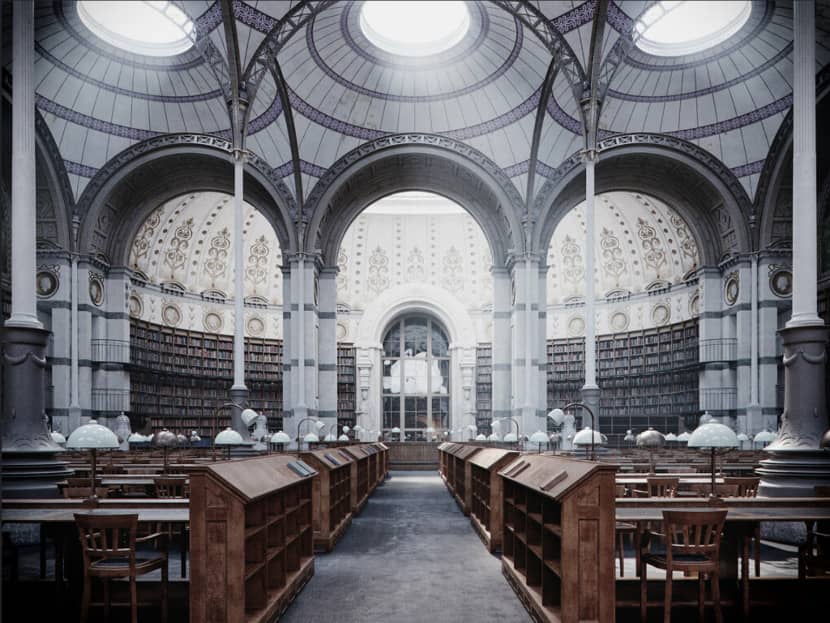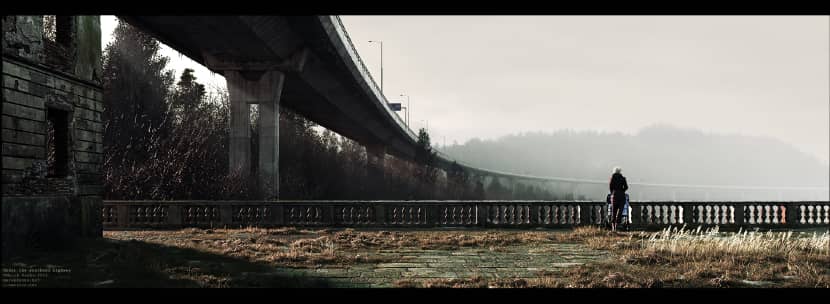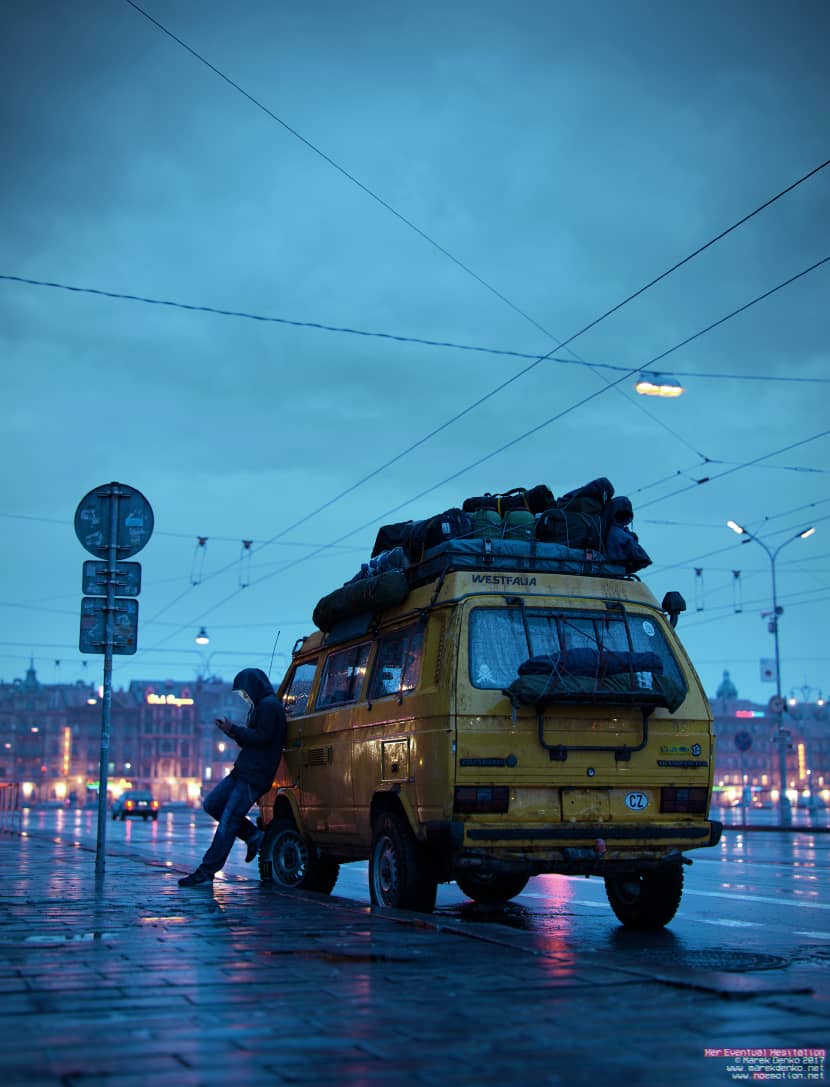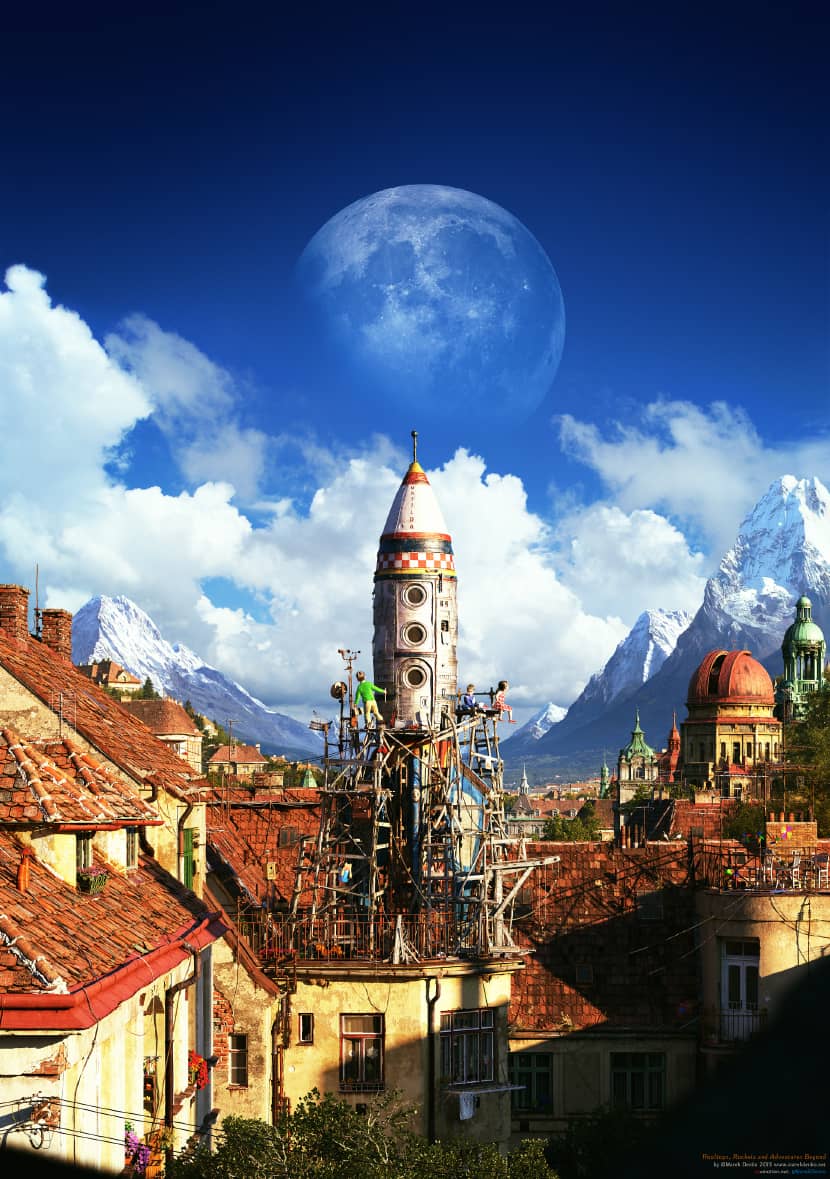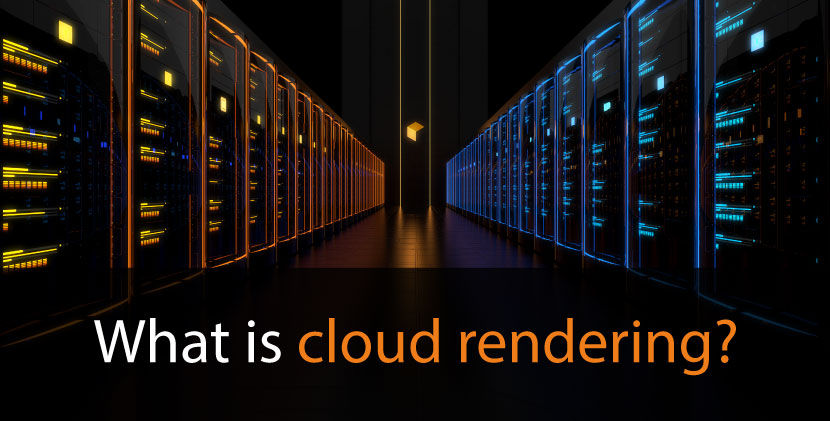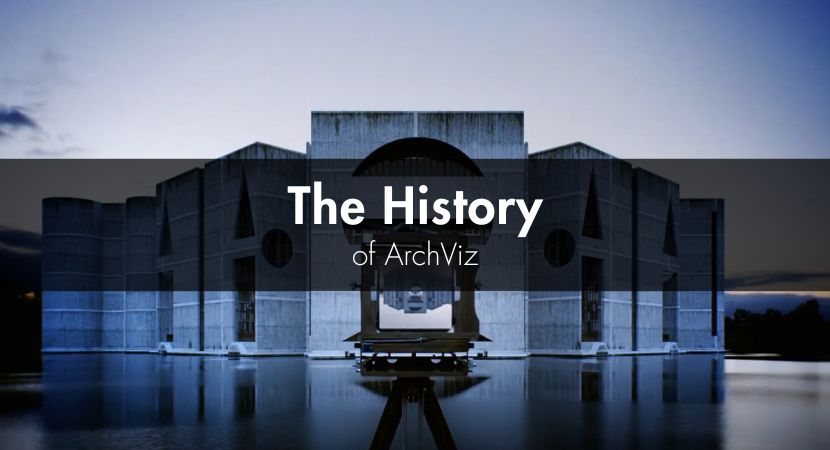
Architectural visualization, commonly known as "Αrchviz," is an essential discipline within architecture, blending art and technology to bring ideas to life before a single brick is laid. What started as hand-drawn sketches and watercolor paintings has transformed into hyper-realistic digital renderings powered by advanced 3D software and cloud-based rendering services like RebusFarm. Understanding the history of architectural visualization not only highlights how far the industry has come but also provides insights into where it's headed next.
In this article, we take you on a journey through the evolution of architectural visualization, from traditional techniques to digital advancements, including technologies, software, artists and the rise of online communities, which have played pivotal roles in shaping the global Αrchviz community.
A Note on Scope.
Capturing the entire history of a 30-year-old artistic discipline in a single article is not an easy venture. Architectural visualization has evolved through countless innovations, milestones, and personal stories. While we cannot cover everything, we will aim to highlight some of the most influential moments and developments—some briefly, others in greater depth—to offer a meaningful glimpse into its exciting journey.
Τhe impetus for this article came from a friend while chatting with him for a while, when I realized that he was unaware of who Alex Roman was. I smiled a bit at first, but then I thought that at some point in the future I should write something related to the history of Archviz. Writing a book is a long process that requires specific skills that I don't think I possess, but writing an article that someone could freely find on the internet and quickly be informed about was something more accessible and feasible for me.
1. The Early Days: Traditional Representation Techniques.
A brief historical review that reports the evolution of this artistic field over the years.
Hand-Drawn Perspectives and Watercolors.
Before the advent of computers, architects relied on manual techniques to communicate their ideas. Pencil sketches, ink drawings, and watercolor paintings were the primary tools of the trade. These artworks served not just as design tools but also as powerful marketing assets to attract clients and investors. This technique is still used today and is preferred mainly in the initial stages of conceptualizing an idea and sometimes even presenting it to clients. As a manual art, it has its own beauty.
Technical Drawings.
Orthographic projections such as plans, sections, and elevations were used for construction purposes but lacked the emotional and spatial impact needed to "sell" the vision of a project. This gap led to the creation of more artistic perspectives that conveyed atmosphere, materiality, and human scale.
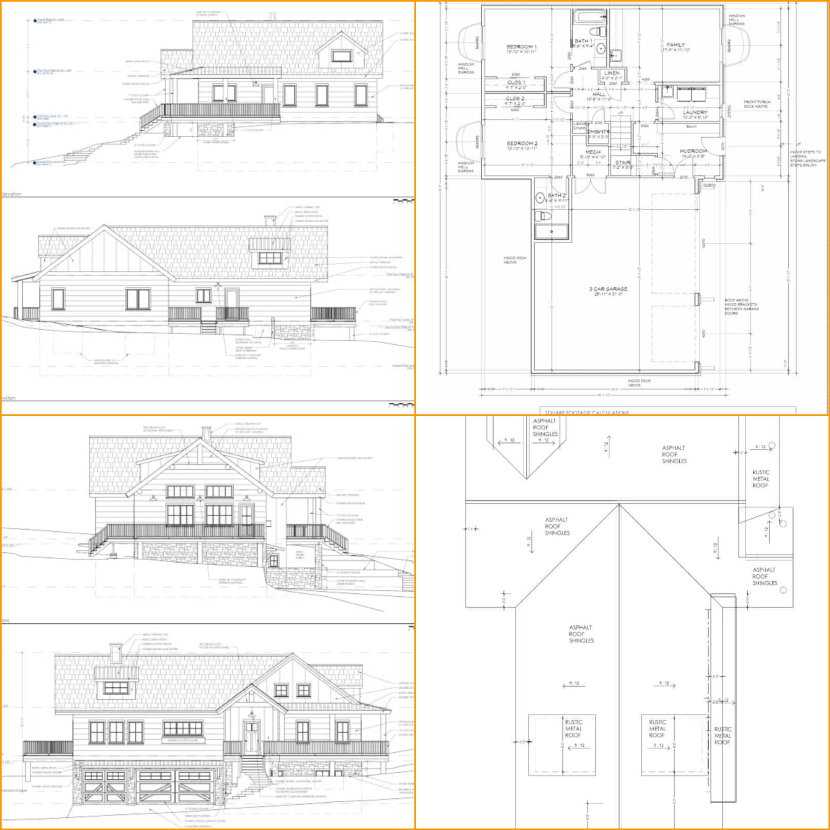
2. The Digital Revolution: CAD and Early 3D Modeling.
The transition from analog to digital tools was a pivotal moment in architectural visualization. It signaled the beginning of a new era where architects and designers could explore, refine, and present their ideas with unprecedented speed and precision. This chapter delves into the foundational technologies that initiated this digital shift and set the stage for the photorealism and interactivity we see today.
Computer-Aided Design (CAD).
The 1980s and 1990s marked a significant turning point with the introduction of CAD software like AutoCAD. CAD allowed for more precise technical drawings, reducing human error and streamlining the design process. However, these drawings were still largely two-dimensional and lacked the emotional impact of hand-drawn perspectives. Despite this limitation, CAD laid the essential groundwork for more complex modeling systems and opened the door to a fully digital design process that continues to evolve today.
Early 3D Software.
To complement the rise of CAD, a wave of early 3D software began to reshape architectural workflows in the 1990s and early 2000s. These applications introduced a new layer of spatial representation and allowed for intuitive modeling of forms and structures, setting the foundation for modern visualization pipelines.
Notable Early CAD and 3D Modeling Software
| Software Name | Year Released | Country of Origin |
|---|---|---|
| AutoCAD | 1982 | USA |
| MicroStation | 1987 | USA |
| Archicad | 1984 | Hungary |
| 3D Studio | 1990 | USA |
| Form-Z | 1991 | USA |
Software like 3D Studio (later 3ds Max), SketchUp, and Form-Z began to emerge in the late 1990s and early 2000s. These tools enabled architects to create simple 3D models, offering a new way to visualize spaces. While the graphics were rudimentary by today's standards, they represented a massive leap forward in design communication.
3. The Rise of Photorealism: Rendering Engines and Post-Production.
As digital modeling matured, artists began to push beyond geometric accuracy and into the realm of visual storytelling. The pursuit of photorealism became the next big leap. In this chapter we explore how rendering engines and post-production workflows helped transform basic models into emotionally resonant, lifelike imagery.
Rendering Engines.
The early 2000s saw the rise of dedicated rendering engines like V-Ray, Mental Ray, and Maxwell Render. These tools introduced global illumination, ray tracing, and physically-based rendering (PBR), significantly improving the realism of digital imagery.
Notable Early Rendering Engines
| Render Engine | Year Released | Country of Origin |
| V-Ray | 2002 | Bulgaria |
| Mental Ray | 1989 | Germany |
| Maxwell Render | 2004 | Spain |
| Brazil R/S | 2002 | Canada |
| FinalRender | 2001 | Germany |
| POV-Ray | 1991 | USA |
| Renderman | 1989 | USA |
| Arnold | 1999 | Spain |
Post-Production Tools and Techniques.
Software like Adobe Photoshop became a staple in the Archviz workflow, allowing artists to enhance renders with sky replacements, people, trees, and other atmospheric elements. This combination of 3D rendering and 2D post-production elevated the quality of architectural visualization to new heights. Explore a general overview of the post-production process below:
In Arqui9 Visualisation's matte painting tutorial, Pedro Fernandes demonstrates how to transform a basic architectural render into a compelling visual narrative using Photoshop. The process begins with establishing a strong composition and mood, followed by integrating photographic elements and applying lighting techniques to enhance realism. Through layering, masking, and the use of custom brushes, the tutorial showcases how to add depth and atmosphere, effectively bridging the gap between raw 3D models and polished, emotive imagery. This approach underscores the power of matte painting in architectural visualization, enabling artists to convey stories and evoke emotions beyond the capabilities of standard renders.
4. Influential Artists Who Redefined the Medium.
Beyond software and workflows, individual artists have played a vital role in shaping the identity and aspirations of architectural visualization. This chapter celebrates three such figures whose work has left an indelible mark on the industry, pushing the boundaries of what's possible and inspiring thousands through their unique visions and relentless pursuit of quality.
Alex Roman and "The Third and The Seventh".
In 2009, Spanish artist Alex Roman released a short film titled "The Third and The Seventh," a cinematic journey exploring architecture, photography, and visual storytelling. Entirely created using 3D software, Roman's work was not just a technical marvel—it was poetic, philosophical, and deeply emotional. It blurred the lines between art and architecture, inspiring an entire generation of 3D artists.
In a later interview, Roman revealed that the project emerged from a period of personal and professional burnout. After a decade in the archviz industry, he stepped away for two years to focus on a project that would reflect his artistic vision without client constraints. Initially unsure of its reception, he was surprised by the overwhelming response from the global community. Roman emphasized the importance of seeking creative inspiration outside the CG world and of focusing on storytelling and emotion, rather than just technical excellence.
"The Third and The Seventh" stands as a milestone in the history of Archviz and not only for its craftsmanship but for its influence in shifting the mindset of artists worldwide toward more expressive and narrative-driven work.
Below you can watch Alex Roman's interview:
Bertrand Benoit and the Art of Photorealism.
Another towering figure in the history of architectural visualization is the French artist Bertrand Benoit. Renowned for his meticulously crafted imagery, Benoit has consistently pushed the boundaries of photorealism. Using several software during his career, he masterfully balances realism with artistry, often re-creating iconic architecture with such detail and mood that his work is frequently mistaken for real photography.
What sets Bertrand apart is not just his technical prowess, but his philosophy. Through interviews and blog posts, he has emphasized the importance of mastering both the software and the photographic eye. Bertrand often draws inspiration from real-world photography, carefully studying composition, lighting, and material behavior. His re-creations of brutalist landmarks and modernist icons demonstrate how CG imagery can serve as both architectural documentation and fine art.
His contributions have greatly influenced the Archviz community, inspiring artists to pay greater attention to lighting, mood, and storytelling in still imagery. He has been featured in countless galleries on platforms where his name has become synonymous with high-quality visualization.
Marek Denko and the Art of Digital Atmosphere.
While Marek Denko may not strictly define himself as an Archviz artist, his impact on the world of architectural visualization is undeniable. A digital artist originally from Slovakia and based in the Czech Republic, Denko is widely admired for his deeply atmospheric and meticulously detailed CG scenes that often blur the line between visual narrative and fine art.
Marek's personal projects, such as the acclaimed "Her Eventual Hesitation" and "Rooftops, Rockets And Adventures Beyond By", reflect a rare blend of nostalgia, storytelling, and technical mastery. His approach to 3D art is rooted in emotion, with compositions that feel both cinematic and grounded in everyday realism. During an interview at the Total Chaos conference, Denko revealed his process is highly introspective and intuitive, often guided more by feeling than by rules.
He also spoke candidly about the long hours and emotional weight involved in creating personal projects, some of which took up to six months to complete. Despite advancements that have made 3D more accessible, Marek embraces a detail-obsessed, hands-on workflow, frequently modeling even the most minute elements from scratch. He views imperfections like dust, grime, and wear as essential storytelling tools.
Watch Marek's interview at the 2018 Total Chaos event in Sofia:
We could go on for hours talking about other influential artists who left their mark on architectural visualization; pioneers who have written, and in many cases are still writing, their own chapter in the field. Take for example Peter Guthrie of The Boundary, whose early and widely adopted HDRI maps helped artists achieve more photorealistic lighting than ever before. Then there's Ander Alencar of Oficina3D, who inspired countless others and gave rise to an entire new generation of artists across Latin America and beyond through his educational programs. The same can be said of Ciro Sannino, founder of Learn V-Ray and later Realistic Interiors, who played a key role in bridging technical mastery with artistic sensibility.
And of course, there are many more whose contributions have shaped our industry. For the sake of brevity, I’ve compiled a list of additional noteworthy names below:
| Founders | Company | Country |
|---|---|---|
| Ciro Sannino | Learn V-Ray & Realistic Interiors | Italy |
| Francesco Legrenzi | Legrenzi Studio | Italy |
| Roberto Cepp De Rose & Gianpiero Monopoli | SOA Academy | Italy |
| Fabio D’Agnano | MADI | Italy |
| Ander Alencar | OF3D Academy | Brazil |
| Nikos Nikolopoulos | Creative Lighting | Greece |
| Simon Oudiette | Horoma School | France |
| Agnieszka Klich & Adam Klich | AVA | Poland |
| Dexter Nguyen | 4PIXOS | Vietnam |
5. Community Building: The Role of Online Platforms.
The growth of online platforms gave artists a space to share their work, learn from one another, and stay informed about the latest trends and technologies. In this chapter, we explore how digital communities have shaped the evolution of the archviz industry and amplified the voices of talented individuals around the globe.
Evermotion.
Established in 1998 in Poland, Evermotion quickly became one of the most prominent platforms supporting the Archviz community. Best known for its Archmodels and high-quality 3D assets, Evermotion provided critical resources that enabled artists to accelerate their workflows while maintaining a high level of realism.
Equally important was its forum, which during the early 2000s emerged as a central meeting point for artists around the world. It offered a space for sharing work-in-progress, troubleshooting techniques, and discussing emerging tools. In the formative years of online Archviz culture, Evermotion's forum played a foundational role in nurturing talent and encouraging collaboration.
CGArchitect.
Founded in 2001 by Jeff Mottle, CGArchitect became the go-to platform for Achviz professionals worldwide. It hosted news, interviews, and annual awards that set industry benchmarks. CGArchitect played a crucial role in legitimizing architectural visualization as a specialized profession. In 2022, the platform was acquired by Chaos Group, marking a new chapter in its evolution and further cementing its relevance within the ecosystem of industry-leading tools and communities.
Ronen Bekerman Blog.
Launched in 2009, Ronen Bekerman's blog quickly gained popularity for its making-of articles, tutorials, and industry insights. The blog became a learning hub for aspiring and professional artists alike, fostering a culture of sharing.
VWArtclub.
Founded in 2012, VWArtclub grew to become the largest and most active Archviz community on Facebook and beyond. With thousands of featured projects, a high-quality curation standard, and a strong daily presence on social media, VWArtclub has been instrumental in connecting artists around the world. The platform promotes excellence by highlighting standout visualizations, organizing challenges, and providing direct engagement through polls and commentary. It continues to be a driving force in both inspiration and professional exposure for 3D artists.
6. The Real-Time Revolution: Interactive and VR Experiences.
As expectations for interactivity grew, real-time visualization tools began to transform how clients and architects experienced design. This chapter highlights how game engines and immersive technologies like VR and AR introduced new ways to explore and communicate architecture.
Game Engines Enter the Scene.
The introduction of game engines like Unreal Engine and Unity brought real-time rendering to architectural visualization. Tools like Twinmotion and Enscape made it easier for architects and designers to create immersive walkthroughs and VR experiences without needing specialized programming skills.
Virtual Reality (VR) and Augmented Reality (AR).
VR headsets like the Oculus Rift and HTC Vive allowed clients to "step into" their future spaces, providing an unparalleled sense of scale and presence. AR applications further enhanced on-site visualization, enabling clients to overlay digital models onto physical environments using smartphones or tablets.
7. The Age of Cloud Rendering and AI.
With rising demand for faster results and greater scalability, cloud rendering and artificial intelligence are redefining production pipelines. In this chapter, we look at how these innovations are streamlining workflows and expanding the creative potential of 3D artists everywhere.
Cloud Rendering Services.
Several online platforms like Rebus Render Farm, have revolutionized the rendering process by offering cloud-based solutions that significantly reduce rendering times. By leveraging high-performance server farms, these services allow artists to offload their projects to the cloud, bypassing the limitations of local hardware. This not only speeds up production but also ensures more consistent and reliable results, especially when working with complex scenes or tight deadlines.
Cloud rendering also enables scalability—users can choose how many nodes or servers they need, depending on project size and urgency. Additionally, most platforms support major 3D software and render engines, offer plugins for seamless integration, and provide real-time cost estimators to manage budgets efficiently. Whether you're an independent freelancer or a large studio, cloud rendering offers an accessible, cost-effective alternative to building and maintaining expensive in-house render farms. For more you can read the article: "What is cloud rendering?"
In a field where speed, quality, and flexibility are paramount, cloud rendering has become an essential tool in the modern CG artist’s workflow.
AI in Archviz.
Recent advancements in artificial intelligence have introduced tools for image enhancement, upscaling, and even automated modeling and texturing. AI-powered platforms like DALL·E, MidJourney, and Magnific AI have begun to influence the creative process, opening new possibilities for concept development and post-production.
8. What’s Next? The Future of Architectural Visualization.
As tools and expectations evolve, so too does the role of the 3D artist. This chapter considers the emerging trends and technologies poised to shape the next chapter in architectural visualization and that means from procedural design to the metaverse and environmental consciousness.
Procedural Design and Generative AI.
The future of architectural visualization lies in procedural design tools like Houdini and AI-driven software that can generate complex geometries and textures with minimal manual input. These technologies promise to accelerate the design process while maintaining high levels of creativity and customization. The only thing left is to watch if and how this will be applied to our industry during the next few years.
Metaverse and Digital Twins.
As the concept of the metaverse gains traction, architectural visualization is poised to play a crucial role in designing virtual environments and digital twins of real-world structures. These advancements could redefine how we interact with both digital and physical spaces.
Sustainability and Green Visualization.
Visualization tools are increasingly being used to simulate environmental factors like daylight, energy consumption, and material sustainability. This shift towards "green visualization" helps architects make informed decisions that benefit both clients and the planet.
Conclusion: A Journey of Continuous Evolution.
From the early days of hand-drawn sketches to the cutting-edge world of real-time rendering and AI-enhanced workflows, architectural visualization has undergone a remarkable transformation. Along the way, communities like CGArchitect, Ronen Bekerman's blog, and VWArtclub have played pivotal roles in shaping the industry, fostering a global network of passionate artists and professionals. As we look to the future, platforms like RebusFarm continue to push the boundaries of what's possible, offering cloud-based solutions that make high-end visualization more accessible than ever. Understanding the history of architectural visualization not only honors the past but also inspires the innovations of tomorrow.
Kind regards & Keep rendering! 🧡
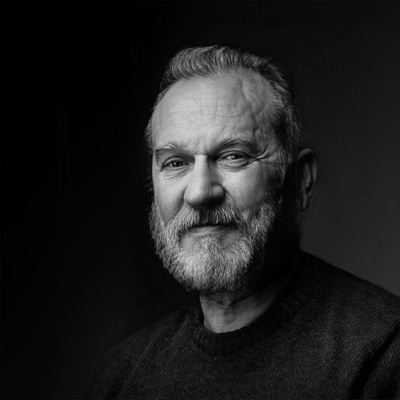
About the author
Vasilis Koutlis, the founder of VWArtclub, was born in Athens in 1979. After studying furniture design and decoration, he started dedicating himself to 3D art in 2002. In 2012, the idea of VWArtclub was born: an active 3D community that has grown over the last 12 years into one of the largest online 3D communities worldwide, with over 160 thousand members. He acquired partners worldwide, and various collaborators trusted him with their ideas as he rewarded them with his consistent state-of-the-art services. Not a moment goes by without him thinking of a beautiful image; thus, he is never concerned with time but only with the design's quality.

